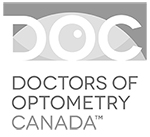In today’s digital age, concerns about the effects of blue light on eye health have gained significant attention. With increased screen time from smartphones, computers, and other digital devices, questions regarding the potential harm caused by blue light have surfaced. Separating myths from scientific truths is essential to understanding its actual impact on eye health.
Myth #1: All Blue Light Is Harmful to Eyes
There’s a common misconception that all blue light is detrimental to eye health. However, not all blue light is created equal. While prolonged exposure to high-energy blue light from digital screens can cause eye strain and disrupt sleep patterns, not all blue light exposure is harmful. In fact, blue light is naturally present in sunlight and plays a role in regulating our circadian rhythm.
Fact #1: The Concern Lies in Excessive and Unprotected Exposure
The primary concern regarding blue light is excessive and unprotected exposure from digital devices. Extended screen time without breaks can lead to digital eye strain, causing symptoms like dry eyes, blurred vision, and headaches. Moreover, studies suggest that blue light exposure in the evening might disrupt sleep patterns by suppressing the production of melatonin, the hormone that regulates sleep.
Myth #2: Blue Light Causes Irreversible Damage to the Eyes
There’s a misconception that blue light exposure leads to irreversible damage to the eyes, such as macular degeneration or permanent vision loss. While some studies associate excessive blue light exposure with increased risk for certain eye conditions, conclusive evidence establishing a direct causal link is still lacking.
Fact #2: Protection and Moderation Are Key
Taking proactive measures to protect eyes from excessive blue light exposure can significantly reduce potential risks. Using blue light filters on screens, taking regular breaks, and practicing the 20-20-20 rule (taking a 20-second break every 20 minutes to look at something 20 feet away) can help alleviate digital eye strain and minimize potential long-term effects.
Myth #3: All Blue Light Glasses Are Equally Effective
There’s a belief that all blue light-blocking glasses are equally effective in protecting eyes from the harmful effects of blue light. However, not all blue light glasses offer the same level of protection, and their effectiveness can vary based on the specific wavelengths they filter.
Fact #3: Look for Evidence-Based Solutions
When choosing blue light-blocking glasses, consider those that are designed to filter a significant portion of harmful blue light while maintaining color accuracy. Consulting an eye care professional for guidance on selecting appropriate protective eyewear can ensure better eye health outcomes.
Conclusion: Balancing Technology Use and Eye Health
While concerns about the impact of blue light on eye health are valid, it’s essential to differentiate between myths and scientifically supported facts. Moderate and protected exposure to blue light, along with conscious efforts to reduce screen time and adopt healthy screen habits, can significantly contribute to maintaining good eye health.
By staying informed and implementing practical strategies to protect eyes from excessive blue light exposure, individuals can strike a balance between technology use and preserving their vision.




Recent Comments